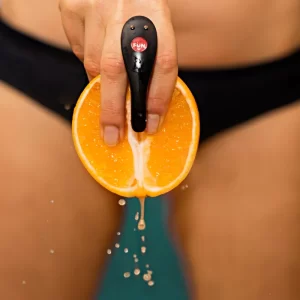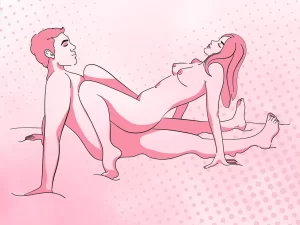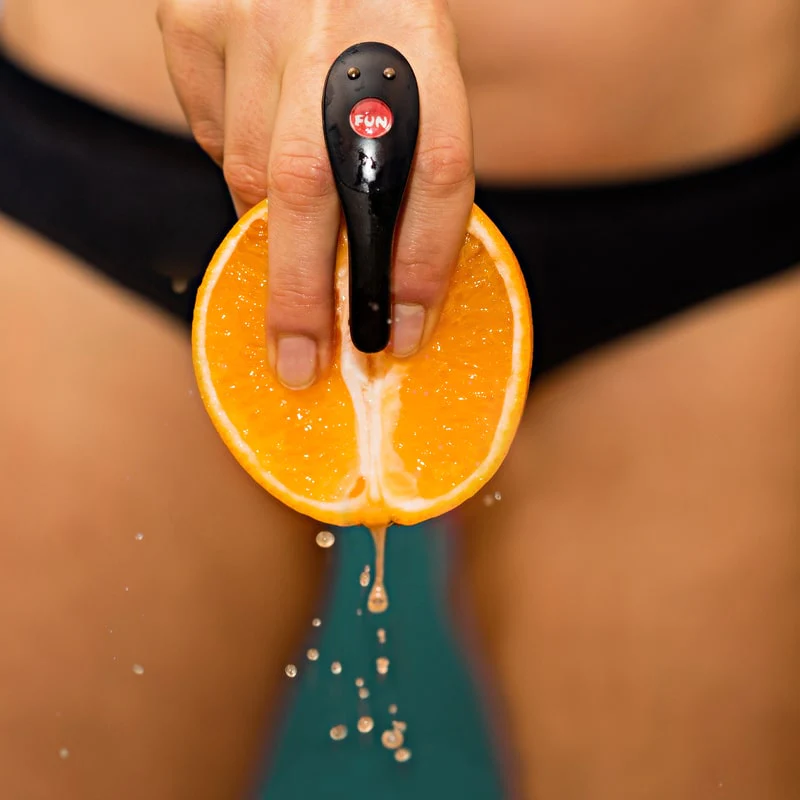What happens during squirting, does it make sex and orgasm better, and is it really equivalent to female ejaculation? An expert reveals what squirting is all about.
We asked a man who should know: Escort man Maxime reports from his wealth of experience: “One of the most requested topics in my workshops on female orgasm and in the encounters with my clients is ‘squirting’. What exactly is it? Is it female ejaculation? Can any woman do it? What’s the appeal of it?” Find answers here.
What does “squirting” mean?
“Squirting” is usually translated as “to squirt”, the term goes back to the English term “to squirt”, which means “(to) squirt out”. However, in many cases it is actually a leakage rather than a squirting of a particular secretion from the vagina. So the term need not be taken too literally.
What is meant is the phenomenon of some women expelling fluid from the vagina during sex. This usually happens in conjunction with an orgasm, which is why squirting is not infrequently compared to male ejaculation.
Does the phenomenon really exist?
Some people consider the female “squirting” during climax, such as anal orgasm, to be a myth created mainly by the porn industry.
However, at this point we can state: Yes, squirting really exists. The phenomenon was described several hundred years ago in various cultures. Even Aristotle dealt with it. In different cultures of the world squirting belongs to the absolute climax of a woman. In the meantime, it is also generally accepted in medicine. However, researchers and physicians argue mainly about whether squirting is synonymous with a woman’s ejaculation or not. Many aspects are still unexplored and not conclusively explained.
Squirting vs. Female Ejaculation: The Difference Explained
According to a recent study, squirting and female ejaculation are two independent processes:
During female ejaculation, a very small amount of a whitish secretion is ejected from the female prostate. Scientists suspected the exact source of the secretion in the so-called Skene’s gland (paraurethral gland), named after the Scottish gynecologist Alexander J.C. Skene, whose ducts originate from the female prostate and end to the left and right of the urinary outlet.
Squirting, on the other hand, is the leakage of a liquid from the bladder, which is more or less diluted urine. Without the urine, the squirting secretion is transparent and has a different taste and smell than urine or the vaginal secretion that moistens the vagina during arousal.
Of course, because both fluids, female ejaculate and squirting fluid, can occur during orgasm, they can occur together and mixed together, which can give the mistaken impression that they are one fluid and one process.
Can every woman squirt?
Women’s bodies are so different! The intensity of orgasm is also different for every woman! And how a woman can reach orgasm, with what technique, whether clitoral or vaginal, is even more different. There are women who squirt unconsciously and expel a lot of fluid. Others try for a long time in vain. For some, it’s just a few drops.
For experimentation, it is worth investing in a washable pad that protects the mattress from stains and can be discreetly hidden under the sheets.
If squirting doesn’t work, it may be because some women don’t produce enough squirting fluid. However, they experience the same feeling as other women who eject a lot of secretion.
So every woman can at least achieve the feeling of squirting by stimulating the female prostate.
During squirting, most women report feeling an additional orgasmic kick. This, they say, should feel as if one loses all pressure in the lower area and lets oneself fall completely. However, an intensification of the climax is also possible, for example, through peaking. With this technique, the orgasm is prolonged and thus intensified many times.

Squirting and female ejaculation: how does it work?
Since the female prostate is supposed to produce the ejaculatory secretion, stimulation of the prostate is an obvious choice. It is located on the anterior vaginal wall, about four to six centimeters behind the vaginal entrance. This is also where a woman’s well-known G-spot is said to be located. However, since not every woman has a particular sensation there, the female prostate can also be aroused by particularly impulsive stimulation of the tickler.
Squirting is defined as “the involuntary expulsion of a larger quantity of more or less dilute urine during sexual activity.” However, it is very clearly distinguished from coital incontinence in that, unlike incontinence, squirting is clearly related to the level of stimulation and particularly high arousal of the woman, and does not generally occur throughout sexual activity.
How can I learn to squirt?
To squirt stimulate your vagina both clitorally (outside) and vaginally (inside). The best way to do this is to insert your middle and ring fingers into your vagina. Press both fingers against the upper vaginal wall. Take your thumb and stimulate your clit with it.
- Variation 1: Use a vibrator for the outer area instead of your thumb.
- Variation 2: Use a vibrator for the inner area and stimulate your outer clitoris with your index and middle finger.
Important: Just before orgasm, you should feel a pressure that feels like you need to go to the bathroom. Now you should not hold back, but let it run by pressing or relaxing (depending on how you feel).
My Tip:
- If you try squirting with your partner, don’t put yourself under pressure. Take your time and don’t tense up.
- By the way, the perfect sex position for squirting is the riding position. You should bend your upper body back slightly. This is the best way for the penis to stimulate the front wall of the vagina. Now the man or woman should stimulate the clitoris.
- The Vienna Oyster sex position is also very suitable for experiencing intense orgasms and squirting. Further assistance can be provided by a wedge-shaped pillow that lifts the woman’s pelvis and thus enables even better stimulation of the G-zone.
- In my experience, this can be very successful. Especially in Africa, it is believed that squirting can be induced in any woman through the so-called Kunyaza technique. This involves stimulating the woman vaginally and clitorally.

I am convinced that every woman has at least the chance to increase her orgasm. With certain training of the lower muscles, squirting can also be learned. Whether then really times something is “squirted”, is different. I have seen women who squirted a lot of liquid. With others it was only drops. A few do not produce any fluid at all or do not notice it. However, all ladies felt a different kind of special orgasm. It is important to train one’s pelvic floor muscle, which is neglected by many women. Love balls are helpful for this.
With trained muscles of the pelvic floor, the orgasm can be supported by targeted tensing and relaxing. Pelvic floor training can be done with the help of love balls or in everyday life without much effort.
But be careful: many women who achieve squirting through masturbation find it difficult to do the same with a partner. The important thing, as all the women I have talked to about this have confirmed, is to be able to relax completely. Pressure and tension are out of place.
Why is the subject so taboo and why are there so few reports from women who can do it?
To this day, most women cannot talk openly about their sexuality. Many women are initially irritated by the fluid they suddenly excrete during orgasm. Since many do not know where the fluid comes from, they initially assume that it is simply urine, that is, that they are suffering from some kind of incontinence. But this is not the case. Many women are embarrassed to talk about it when they squirt. They also feel ashamed in front of their partner. But it is actually a compliment for the partner, because it only works if the woman is absolutely relaxed. She must feel comfortable with her partner and be able to let go.
Conclusion: you should not put yourself under pressure at all and want to prove to yourself or your partner that you can squirt. Whether you can do it or not should not be the main focus. Rather, the achievement of orgasm should be in the foreground. The important thing is that you let yourself go and do it completely, because that’s the only way to experience squirting.
Interesting facts about the topic: Katharina Bonk: “We women talk openly about sex with others, but not about masturbation.”
